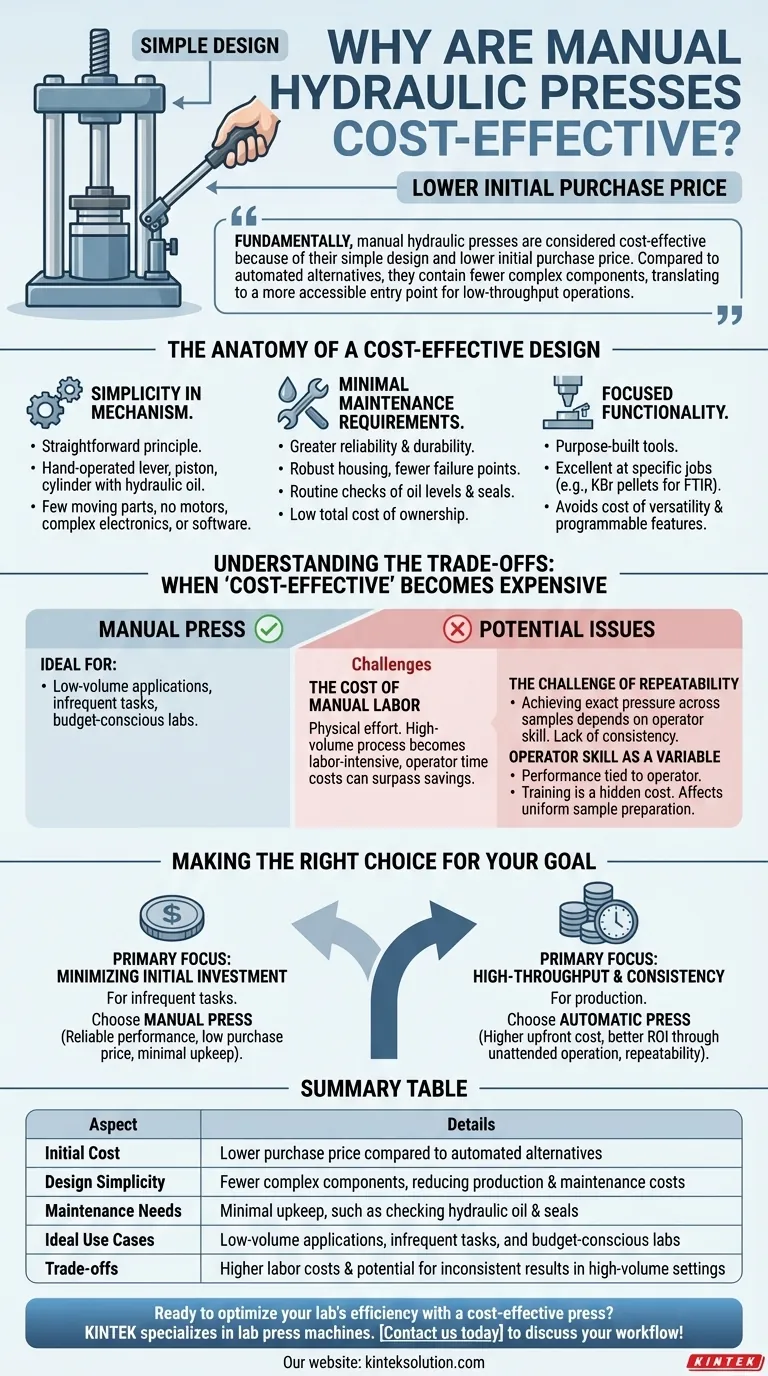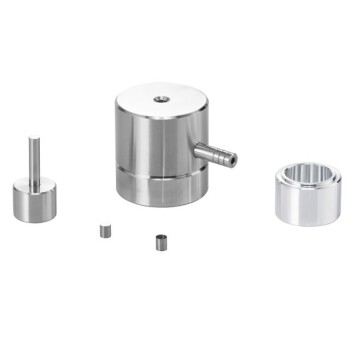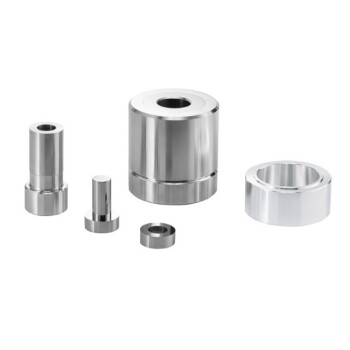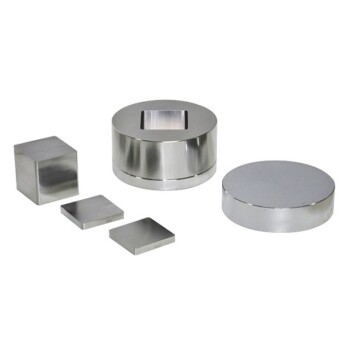Fundamentally, manual hydraulic presses are considered cost-effective because of their simple design and lower initial purchase price. Compared to automated alternatives, they contain fewer complex components, which directly translates to a more accessible entry point for laboratories or workshops that do not require high-throughput operation.
The core reason for their cost-effectiveness is a strategic trade-off: a manual press exchanges the high upfront cost and complexity of automation for lower capital investment and minimal maintenance, making it ideal for specific, low-volume applications.
The Anatomy of a Cost-Effective Design
The affordability of a manual press is rooted in its mechanical simplicity. Understanding this design clarifies why it is a financially sound choice for certain operational needs.
Simplicity in Mechanism
A manual hydraulic press operates on a straightforward principle. A user pumps a hand-operated lever, which controls a piston moving within a cylinder filled with hydraulic oil.
This direct action generates significant force with very few moving parts. There are no motors, complex electronics, or software systems to design, manufacture, or maintain, which dramatically reduces the production cost.
Minimal Maintenance Requirements
With a simpler design comes greater reliability and durability. The robust housing and lack of sensitive electronic components mean there are fewer points of failure.
Routine maintenance is typically limited to checking hydraulic oil levels and ensuring the seals are intact. This low maintenance burden reduces the total cost of ownership over the lifespan of the equipment.
Focused Functionality
Manual presses are purpose-built tools. They are designed to do one job exceptionally well, such as preparing KBr pellets for FTIR spectroscopy or sample pellets for XRF analysis.
They avoid the cost associated with the versatility and programmable features of automated systems, focusing only on the essential function of applying controlled pressure.
Understanding the Trade-offs: When 'Cost-Effective' Becomes Expensive
While the initial price is low, the "cost-effective" label depends entirely on your use case. In the wrong environment, a manual press can become a bottleneck and an operational expense.
The Cost of Manual Labor
The primary disadvantage is the reliance on physical effort. For applications requiring frequent and repeated use, the process becomes labor-intensive.
In a high-volume setting, the cost of an operator's time can quickly surpass the initial savings of the manual press. An automatic press, while more expensive upfront, may offer a better return on investment through unattended operation.
The Challenge of Repeatability
While most manual presses include an accurate pressure gauge, achieving the exact same pressure across dozens of samples is highly dependent on operator skill and attention.
Automated systems can be programmed to deliver a precise, repeatable force every time, which is critical for experiments or quality control processes where consistency is paramount. A lack of repeatability can lead to inconsistent results and wasted materials.
Operator Skill as a Variable
The performance of a manual press is directly tied to the person operating it. This introduces a variable that can be difficult to control.
Proper training is required to ensure correct and consistent use, representing a hidden cost. An automated press removes this variable, ensuring uniform sample preparation regardless of the operator.
Making the Right Choice for Your Goal
To determine if a manual press is truly the most cost-effective solution for you, you must evaluate your primary operational goal.
- If your primary focus is minimizing initial investment for infrequent tasks: A manual press is the definitive choice, offering reliable performance with a low purchase price and minimal upkeep.
- If your primary focus is high-throughput production or absolute consistency: The long-term labor costs and potential for variability make an automatic press the more cost-effective solution.
Ultimately, choosing the right tool requires looking beyond the sticker price to understand the total cost of ownership within the context of your specific workflow.
Summary Table:
| Aspect | Details |
|---|---|
| Initial Cost | Lower purchase price compared to automated alternatives |
| Design Simplicity | Fewer complex components, reducing production and maintenance costs |
| Maintenance Needs | Minimal upkeep, such as checking hydraulic oil and seals |
| Ideal Use Cases | Low-volume applications, infrequent tasks, and budget-conscious labs |
| Trade-offs | Higher labor costs and potential for inconsistent results in high-volume settings |
Ready to optimize your lab's efficiency with a cost-effective press? KINTEK specializes in lab press machines, including manual hydraulic presses, automatic lab presses, isostatic presses, and heated lab presses, tailored to meet your laboratory needs. Whether you're preparing samples for FTIR or XRF analysis, our solutions deliver reliability and savings. Contact us today to discuss how we can support your specific workflow and enhance your productivity!
Visual Guide

Related Products
- Laboratory Hydraulic Press 2T Lab Pellet Press for KBR FTIR
- Automatic Laboratory Hydraulic Press Lab Pellet Press Machine
- Automatic Laboratory Hydraulic Press for XRF and KBR Pellet Pressing
- Manual Heated Hydraulic Lab Press with Integrated Hot Plates Hydraulic Press Machine
- Laboratory Hydraulic Press Lab Pellet Press Button Battery Press
People Also Ask
- What are the main advantages of using hydraulic presses for sample preparation? Achieve Precise, Uniform Samples for Reliable Analysis
- What is the overall significance of hydraulic presses in laboratories? Unlock Precision and Power for Your Research
- What are the benefits of reduced physical effort and space requirements in hydraulic mini presses? Boost Lab Efficiency and Flexibility
- How are hydraulic presses used in spectroscopy and compositional determination? Enhance Accuracy in FTIR and XRF Analysis
- What are the advantages of using the hydraulic portable press for making KBr pellets? Achieve Superior FT-IR Sample Prep



















